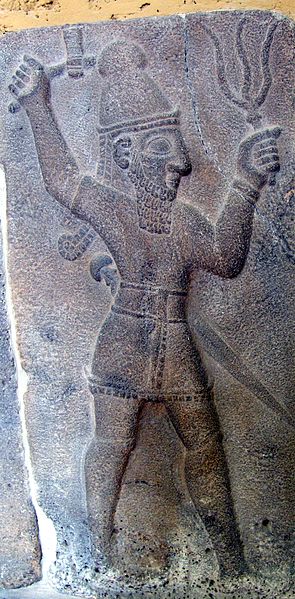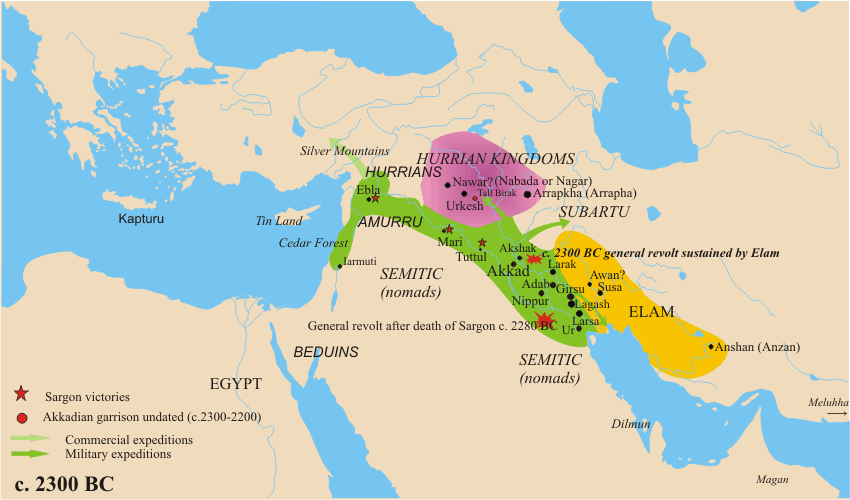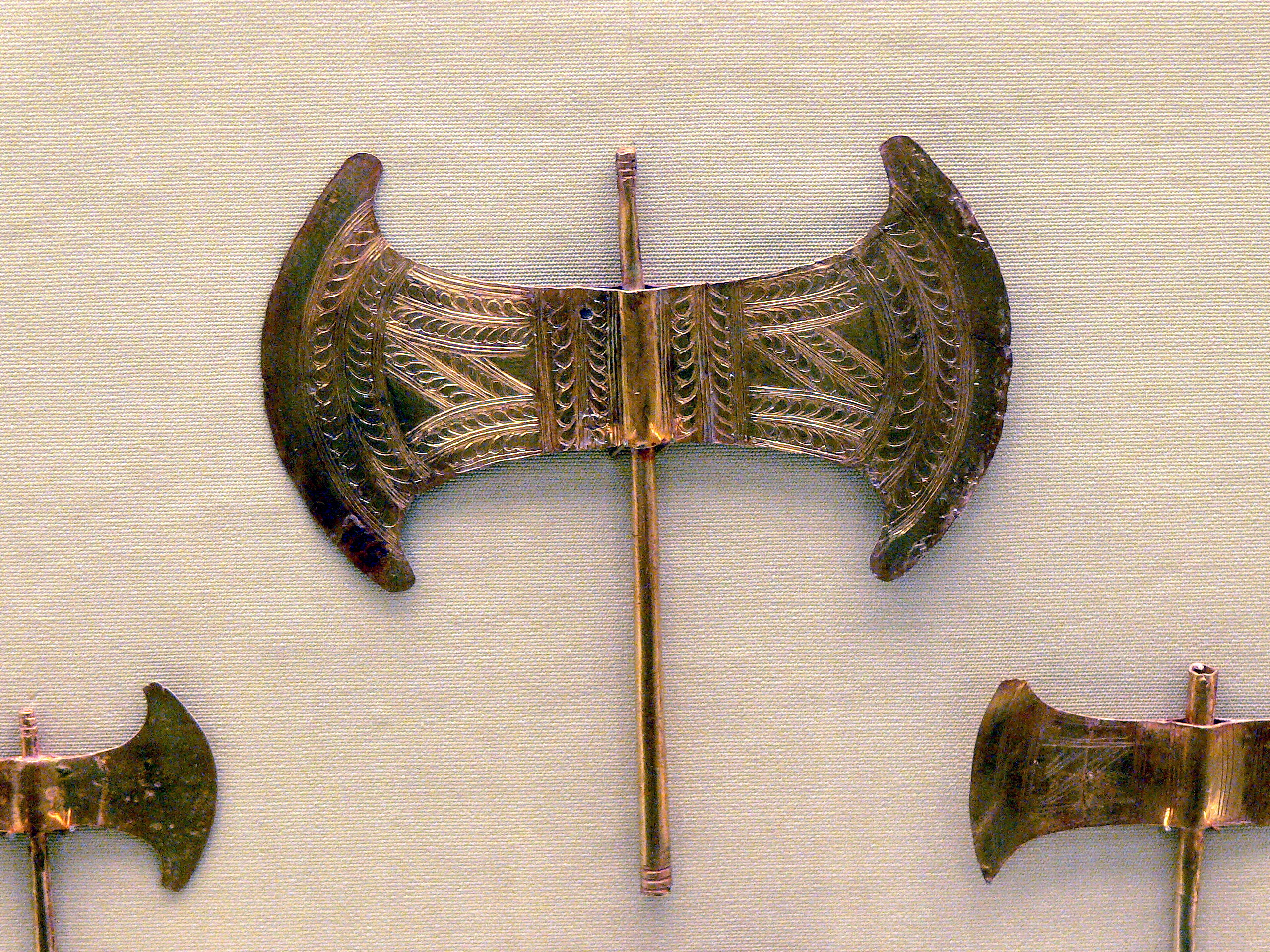|
Teshup
Teshub (also written Teshup, Teššup, or Tešup; cuneiform ; hieroglyphic Luwian , read as ''Tarhunzas'';Annick Payne (2014), ''Hieroglyphic Luwian: An Introduction with Original Texts'', 3rd revised edition, Wiesbaden: Harrassowitz Verlag, p. 159. Ugaritic 𐎚𐎘𐎁, ''TṮB'') was the Hurrians, Hurrian god of sky, thunder, and storms. Taru was the name of a similar Hattians, Hattic storm god, whose mythology and worship as a primary deity continued and evolved through descendant Luwian and Hittite cultures. In these two, Taru was known as ''Tarhun / Tarhunt- / Tarhuwant- / Tarhunta'', names derived from the Anatolian languages, Anatolian root ''*tarh'' "to defeat, conquer". Taru/Tarhun/Tarhunt was ultimately assimilated into and identified with the Hurrian Teshub around the time of the religious reforms of Muwatalli II, ruler of the Hittite New Kingdom in the early 13th century BCE. [...More Info...] [...Related Items...] OR: [Wikipedia] [Google] [Baidu] |
Muwatalli II
:''See also Muwatalli I'' Muwatalli II (also Muwatallis, or Muwatallish) was a king of the New Kingdom of the Hittite empire c. 1295–1282 (middle chronology) and 1295–1272 BC in the short chronology. Biography He was the eldest son of Mursili II and Queen Gassulawiya, and he had several siblings. He is best known for relocating the Hittite capital to Tarhuntassa, appointing his brother Hattusili as governor in Hattusa, and fighting Ramesses II in the Battle of Kadesh. A copy of a treaty has been recovered between him and Alaksandu, ruler of Wilusa (Troy), one of the Arzawa lands. Egyptologists suspect that some time prior to Ramesses II's accession to the Egyptian throne, Muwattalli had reached an informal peace treaty or understanding with Seti I over Kadesh to avoid a clash between the two powers over control of Syria. In it, Seti effectively ceded Kadesh to the Hittite king in order to focus on domestic issues in Egypt. Muwatalli had a wife named Tanu-Ḫepa and at le ... [...More Info...] [...Related Items...] OR: [Wikipedia] [Google] [Baidu] |
Hurrians
The Hurrians (; cuneiform: ; transliteration: ''Ḫu-ur-ri''; also called Hari, Khurrites, Hourri, Churri, Hurri or Hurriter) were a people of the Bronze Age Near East. They spoke a Hurrian language and lived in Anatolia, Syria and Northern Mesopotamia. The largest and most influential Hurrian nation was the kingdom of Mitanni, its ruling class perhaps being Indo-Aryan speakers. The population of the Hittite Empire in Anatolia included a large population of Hurrians, and there is significant Hurrian influence in Hittite mythology. By the Early Iron Age, the Hurrians had been assimilated with other peoples. The state of Urartu later covered some of the same area. Language The Hurrian language is closely related to the Urartian language, the language of the ancient kingdom of Urartu. Together they form the Hurro-Urartian language family. The external connections of the Hurro-Urartian languages are disputed. There exist various proposals for a genetic relationship to other ... [...More Info...] [...Related Items...] OR: [Wikipedia] [Google] [Baidu] |
Theispas
''Theispas'' (also known as Teisheba or Teišeba) of Kumenu was the Araratian (Urartian) weather-god, notably the god of storms and thunder. He was also sometimes the god of war. He is the son of Habli. He formed part of a triad along with Khaldi and Shivini. The ancient Araratian cities of Teyseba and Teishebaini were named after Theispas. He is a counterpart to the Assyrian god Adad, the Vedic God Indra, and the Hurrian god, Teshub. He was often depicted as a man standing on a bull, holding a handful of thunderbolts. His wife was the goddess Huba, who was the counterpart of the Hurrian goddess Hebat. See also *Teshup *Urartu *Teispes Teïspes (from Greek ; in peo, 𐎨𐎡𐏁𐎱𐎡𐏁 ''Cišpiš''; Akkadian: 𒅆𒅖𒉿𒅖 ''Šîšpîš'',Kent (1384 AP), page 394 Elamite: Zi-iš-pi-iš) ruled Anshan in 675–640 BC. He was the son of Achaemenes of Persis and an ancest ... References Urartian deities Sky and weather gods {{Armenia-hist-stub ... [...More Info...] [...Related Items...] OR: [Wikipedia] [Google] [Baidu] |
Tarḫunna
Tarḫunna or Tarḫuna/i was the Hittite weather god. He was also referred to as the "Weather god of Heaven" or the "Lord of the Land of Hatti". Name Tarḫunna is a cognate of the Hittite verb ''tarḫu-zi'', "to prevail, conquer, be powerful, be able, defeat"; from the Proto-Anatolian weather god ''*Tṛḫu-ent-,'' "conquering"; ultimately from PIE ''*terh₂-'', "to cross over, pass through, overcome". The same name was used in almost all Anatolian languages: Luwian '' Tarḫunz-''; Carian ''Trquδ-''; Milyan ''Trqqñt-'', and Lycian: ''Trqqas'' (A), ''Trqqiz'' (B). Norbert Oettinger has argued that the functions of the Anatolian weather god ultimately come from the Proto-Indo-European god Perkwunos, but that they did not preserve the old name to coin instead the new epithet ''Tṛḫu-ent-'' ("conquering"), which sounded close to the name of the Hattian Storm-god ''Taru''. Role As weather god, Tarḫunna was responsible for the various manifestations of the wea ... [...More Info...] [...Related Items...] OR: [Wikipedia] [Google] [Baidu] |
Hieroglyphic Luwian
Hieroglyphic Luwian (''luwili'') is a variant of the Luwian language, recorded in official and royal seals and a small number of monumental inscriptions. It is written in a hieroglyphic script known as Anatolian hieroglyphs. A decipherment was presented by Emmanuel Laroche in 1960, building on partial decipherments proposed since the 1930s. Corrections to the readings of certain signs as well as other clarifications were given by David Hawkins, Anna Morpurgo Davies and Günther Neumann in 1973, generally referred to as "the new readings". Overview According to Hittitologist Alwin Kloekhorst, Hieroglyphic Luwian may also be known as Empire Luwian or Iron Age Luwian, and is "closely related" to its sister language, Cuneiform Luwian. Similarly, Alice Mouton and Ilya Yakubovich separate Luwian into two distinct varieties: cuneiform and hieroglyphic - the latter of a more prestigious and elite use. Inscriptions The earliest hieroglyphs appear on official and royal seals, dating from ... [...More Info...] [...Related Items...] OR: [Wikipedia] [Google] [Baidu] |
Labrys
''Labrys'' ( gr, , lábrus) is, according to Plutarch (''Quaestiones Graecae'' 2.302a), the Lydian word for the double-bitted axe. In Greek it was called (''pélekus''). The Ancient Greek plural of ''labrys'' is ''labryes'' (). Etymology Plutarch relates that the word was a Lydian word for 'axe': . Many scholars including Evans assert that the word ''labyrinth'' is derived from ''labrys'' and thus, would imply 'house of the double axe'. A priestly corporation in Delphi was named ''Labyades''; the original name was probably ''Labryades'', servants of the double axe. In Roman times at Patrai and Messene, a goddess Laphria was worshipped, commonly identified with Artemis. Her name was said to be derived from the region around Delphi. In Crete the "double axe" is not a weapon, however, and it always accompanies women, not a male god. Beekes regards the relation of ''labyrinth'' with ''labrys'' as speculative, and rather proposes a relation with (), 'narrow street', or to th ... [...More Info...] [...Related Items...] OR: [Wikipedia] [Google] [Baidu] |
Thunderbolt
A thunderbolt or lightning bolt is a symbolic representation of lightning when accompanied by a loud thunderclap. In Indo-European mythology, the thunderbolt was identified with the 'Sky Father'; this association is also found in later Hellenic representations of Zeus and Vedic descriptions of the ''vajra'' wielded by the god Indra. It may have been a symbol of cosmic order, as expressed in the fragment from Heraclitus describing "the Thunderbolt that steers the course of all things". In its original usage the word may also have been a description of the consequences of a close approach between two planetary cosmic bodies, as Plato suggested in ''Timaeus'', or, according to Victor Clube, meteors, though this is not currently the case. As a divine manifestation the thunderbolt has been a powerful symbol throughout history, and has appeared in many mythologies. Drawing from this powerful association, the thunderbolt is often found in military symbolism and semiotic representat ... [...More Info...] [...Related Items...] OR: [Wikipedia] [Google] [Baidu] |
Weather God
A weather god or goddess, also frequently known as a storm god or goddess, is a deity in mythology associated with weather phenomena such as thunder, snow, lightning, rain, wind, storms, tornadoes, and hurricanes. Should they only be in charge of one feature of a storm, they will be called after that attribute, such as a rain god or a lightning/thunder god. This singular attribute might then be emphasized more than the generic, all-encompassing term "storm god", though with thunder/lightning gods, the two terms seem interchangeable. They feature commonly in polytheistic religions. Storm gods are most often conceived of as wielding thunder and/or lightning (some lightning gods' names actually mean "thunder", but since one cannot have thunder without lightning, they presumably wielded both). The ancients didn't seem to differentiate between the two, which is presumably why both the words "lightning bolt" and "thunderbolt" exist despite being synonyms. Of the examples currently liste ... [...More Info...] [...Related Items...] OR: [Wikipedia] [Google] [Baidu] |
Urartu
Urartu (; Assyrian: ',Eberhard Schrader, ''The Cuneiform inscriptions and the Old Testament'' (1885), p. 65. Babylonian: ''Urashtu'', he, אֲרָרָט ''Ararat'') is a geographical region and Iron Age kingdom also known as the Kingdom of Van, centered around Lake Van in the historic Armenian Highlands. The kingdom rose to power in the mid-9th century BC, but went into gradual decline and was eventually conquered by the Iranian Medes in the early 6th century BC. Since its re-discovery in the 19th century, Urartu, which is commonly believed to have been at least partially Armenian-speaking, has played a significant role in Armenian nationalism. Names and etymology Various names were given to the geographic region and the polity that emerged in the region. * Urartu/Ararat: The name ''Urartu'' ( hy, Ուրարտու; Assyrian: '; Babylonian: ''Urashtu''; he, אֲרָרָט ''Ararat'') comes from Assyrian sources. Shalmaneser I (1263–1234 BC) recorded a campaign in wh ... [...More Info...] [...Related Items...] OR: [Wikipedia] [Google] [Baidu] |
Hittite New Kingdom
The Hittites () were an Anatolian people who played an important role in establishing first a kingdom in Kussara (before 1750 BC), then the Kanesh or Nesha kingdom (c. 1750–1650 BC), and next an empire centered on Hattusa in north-central Anatolia (around 1650 BC). This empire reached its height during the mid-14th century BC under Šuppiluliuma I, when it encompassed an area that included most of Anatolia as well as parts of the northern Levant and Upper Mesopotamia. Between the 15th and 13th centuries BC, the Empire of Hattusa—in modern times conventionally called the Hittite Empire—came into conflict with the New Kingdom of Egypt, the Middle Assyrian Empire and the empire of Mitanni for control of the Near East. The Middle Assyrian Empire eventually emerged as the dominant power and annexed much of the Hittite Empire, while the remainder was sacked by Phrygian newcomers to the region. After BC, during the Late Bronze Age collapse, the Hittites splintered into seve ... [...More Info...] [...Related Items...] OR: [Wikipedia] [Google] [Baidu] |
Anatolian Languages
The Anatolian languages are an extinct branch of Indo-European languages that were spoken in Anatolia, part of present-day Turkey. The best known Anatolian language is Hittite, which is considered the earliest-attested Indo-European language. Undiscovered until the late 19th and 20th centuries, they are often believed to be the earliest branch to have split from the Indo-European family. Once discovered, the presence of laryngeal consonants ''ḫ'' and ''ḫḫ'' in Hittite and Luwian provided support for the laryngeal theory of Proto-Indo-European linguistics. While Hittite attestation ends after the Bronze Age, hieroglyphic Luwian survived until the conquest of the Neo-Hittite kingdoms by Assyria, and alphabetic inscriptions in Anatolian languages are fragmentarily attested until the early first millennium AD, eventually succumbing to the Hellenization of Anatolia. Origins The Anatolian branch is often considered the earliest to have split from the Proto-Indo-European l ... [...More Info...] [...Related Items...] OR: [Wikipedia] [Google] [Baidu] |
Hattians
The Hattians () were an ancient Bronze Age people that inhabited the land of ''Hatti'', in central Anatolia (modern Turkey). They spoke a distinctive Hattian language, which was neither Semitic nor Indo-European. Hattians are attested by archeological records from the Early Bronze Age and by historical references in later Hittite and other sources. Their main centre was the city of Hattush. Faced with Hittite expansion (since 2000 BC), Hattians were gradually absorbed (by 1700 BC) into the new political and social order, imposed by the Hittites, who were one of the Indo-European-speaking Anatolian peoples. The Hittites kept the country name ("land of Hatti") unchanged, which also became the main designation for the Hittite state. Terminology Complex questions related to etymology of endonymic terms for Hattians, their land, language and capital city (Hatti, Hattili, Hattush) are debated among scholars. Later conquerors (Hittites) did not change the name of the city (Hat ... [...More Info...] [...Related Items...] OR: [Wikipedia] [Google] [Baidu] |









